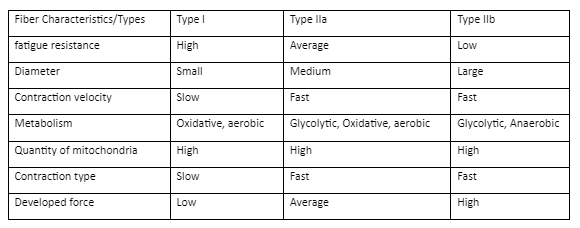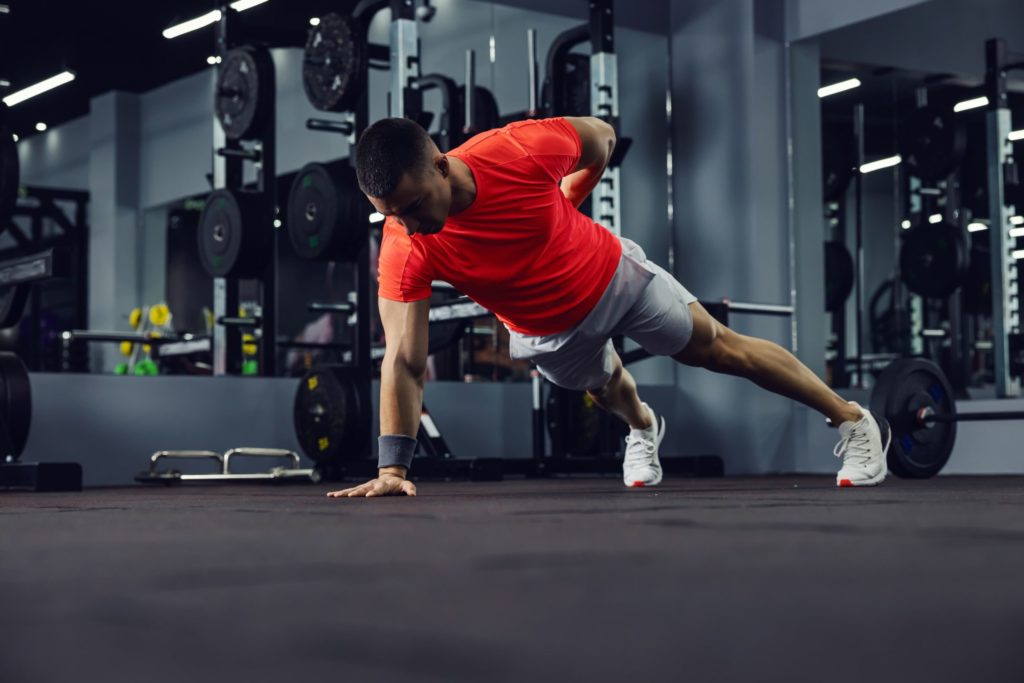1 de October de 2021
Types of strenght and how to train each of them
If we are not very familiar with the world of training, and when we talk about strength training, we usually think of a training session with loads full of sweat and tears as the “No pain, no gain” fitness industry has sold to us, where we fill the bar with the maximum possible weight and perform repetitions until we reach practically to failure. But we must know that the vast majority of cases, is not neither the most effective nor the most efficient.
Do you want to know what types of forces exist? Which of them is the most related to your goal? Which one should you train and how should you do it?
Basic concepts
Strength is defined as the ability of muscles to contract and overcome endurance. These muscles are composed of muscle fibers, and muscle fibers are composed of sarcomeres, which allow the muscles to contract and relax, making them move.
The human body and muscle tissue are constantly in a state of protein exchange, that is, muscle protein is continuously synthesized and degraded. This difference leads to a net protein balance. Muscle growth occurs when a sufficient level of positive net protein balance is achieved over time (Schoenfeld, 2016).
The nervous system sends signals to the muscle system and triggers a series of chemical reactions that cause the proteins in the fibers to rearrange in a way that shortens the muscles. When the signal dissipates, the process reverses and the fiber rearranges again and relax their muscles. This is called fiber recruitment.
There are different types of fibers:
- Type I fibers: These are what we know as slow-twitch fibers. They have a stronger fatigue resistance.
- Type II fibers: these are what we know as fast shrinking fibers and their development of strength is 3-5 times that of slow-twitch fibers. These are divided in order in type IIa fiber and type IIb fiber:
- Type IIa fibers are larger (diameter) than type I fibers, but smaller than type IIb and also have a high number of mitochondria, which that allows them to produce energy from the oxidative system. Are recruited after type I fibers in rapid, repetitive, and shallow movements intensity.
- Type IIb fibers are the largest fibers. They have high glycolytic capacity and are recruited only when very fast and very intense effort is required, such as in weightlifting, throws, or max jumps.
Depending on the type of force we train, we will obtain different fiber distributions. For example, the number of fibers that marathon runners will mobilize and the order in which they are recruited in his training is different from that of a weightlifter.

Maximum strenght
This type of strength refers to the athlete’s ability to perform maximum voluntary muscle contraction. This will depend on different factors, such as intramuscular and intermuscular coordination, the amount of ATP we have, the neuromuscular system, the co-activation of active and antagonist muscles, the coordination of motor neurons, and the exercise or movement to be performed Have good technology., etc. This will also affect the remaining force types.
As we already know, weight-bearing training can improve the performance of any sport, although in some sports, the percentage of the maximum isometric strength required for the exercise posture at a certain moment in the game plays a fundamental role.
Among these sports with very high demand for strength, weightlifting, powerlifting and bodybuilding are the most prominent. In addition to bodybuilding, these sports are characterized by the use of very high loads, slow execution speed (directly related to the type of load), and very high requirements for maximum power.

Frequency, volume and intesity
It has been shown that a greater improvement is obtained during regular training, that is, a high training frequency (equal to or greater than 3 trainings per week for each muscle group). In addition, it has been shown that higher training frequency seems to have a greater impact on multi-joint exercises.
Regarding the strength of the load, it must be high (> 85% 1RM) and have a very high effort, but we must try not to produce residual fatigue, so the number of repetitions of the series should be about 1-6 times. This does not mean that we should train until we encounter technical or mechanical failures during training, because it is not the most effective. Frequent failure will hurt your overall training volume, so if you fail to train, keep a clear purpose.
Due to the high intensity of the series to be executed, the rest period between them must be long enough to recover from the next submaximal or maximum effort (> 3 minutes).
Finally, the number of each muscle group or exercise per week should be between 8-15 effective series. It must be taken into account that certain movements or actions may be very stressful, which can cause injuries if the variables are not controlled correctly and the situation of the athlete is taken into account individually.

Strenght – Power
We have to keep in mind that it is not necessary to always move a high percentage of the relative load (1RM) to promote greater strength gains. It is important to know which type of load you most want to improve and follow the principle of specificity.
Power, also known as explosive force or elastic explosive force, is defined as the ability to perform work per unit of time, understanding work as Newtons of force.
When we want to work on this specific type of strength, we must focus on lifting the weight at the maximum possible speed, although this should also happen when we seek maximum strength. The characteristic of this kind of strength training method is that we must try not to lose +20/30% of the series velocity, which is a low-effort character. In this way, we will avoid the accumulation of lactic acid and cause us enough fatigue, thereby preventing us to execute the following series at the maximum possible actual velocity.
On the other hand, we must focus on velocity-based training (VBT), which is a training method that focuses on achieving the maximum possible velocity in your weightlifting or movement.

But, what benefits can I get from Velocity-based training?
- More effective in strength/strength improvement.
- Improve neuromuscular fitness
- It is more efficient since you achieve more with less volume and less time
- It is safer and less harmful because training is far from a failure.
In addition, if you have the kind of encoder provided by Vitruve, the exercise will be more precise because we will use the actual programmed load percentage for training, and you can continuously control your progress on a session-by-session basis. If you want to delve into this topic, I recommend this article from our blog: “What is velocity-based training?”
For all these advantages and more advantages that I will tell you below, the Vitruve team is committed to velocity-based training (VBT).
Power Resistance
Last but not least, we are resistant to power. Porta (1988) understood it as the ability of a muscle to overcome resistance over a long period of time. It is also considered the ability to delay fatigue under repeated long-term loads.
Contrary to what people initially thought, this power exists in many types of sports. From gymnasts who need to maintain all positions at equal distances, to boxers who have to endure a lot of rounds after being hit, to more cyclical sports that require mechanical and repetitive strength development, such as cyclists, runners, rowers, etc.
Depending on the discipline and the exact duration of the different sports modalities, it will be more aerobic or anaerobic work at the energy level, so the load training used to improve our performance will also change.
González-Badillo and Gorostiaga (1995) proposed different forms of required training:
- In order to resist rapid forces, they recommend doing 3-5 sets of 8-20 repetitions at maximum speed, using 30-70% of 1RM, and using 60-90 inches of recovery.
- For endurance exercises with low strength levels, they recommend 5 sets of 20 repetitions or more at a speed of 30-40%, with slower execution speed and shorter pause time (30 inches -60 inches)
Finally, we must emphasize that these types of strength are not completely different characteristics, and they cannot be trained at the same time. By training the maximum strength, our explosive power will also benefit, and vice versa. In addition, through parallel training and good programming, resistance training and strength training can be combined, for example, seeing that both aspects benefit, and most importantly, whether athletes need to benefit according to their discipline (principle of particularity).
We only need to consider training variables such as volume, frequency, and intensity.
Bibliography
- Schoenfeld B. (2021). Science and Development of Muscle Hypertrophy. Second edition. Human Kinetics
- Pedro J. Benito Peinado (2021). Advanced concepts of training with loads. Volume I and II
- Eric Helms, PhD, CSCS Andrea Valdez, MS Andy Morgan, BS. (2013). The Muscle and Strength Pyramid: Training

